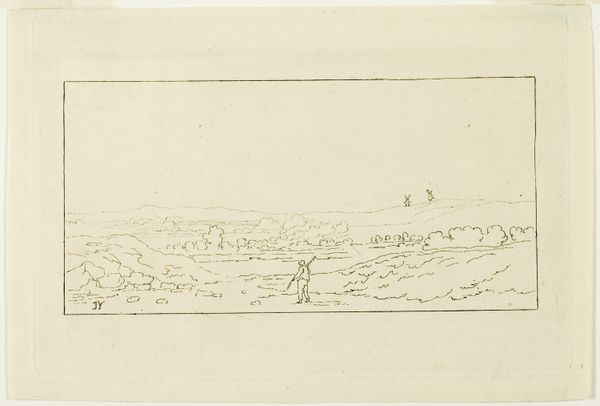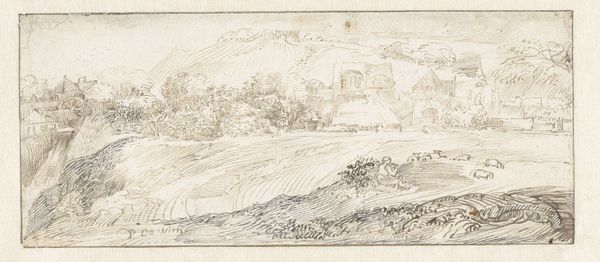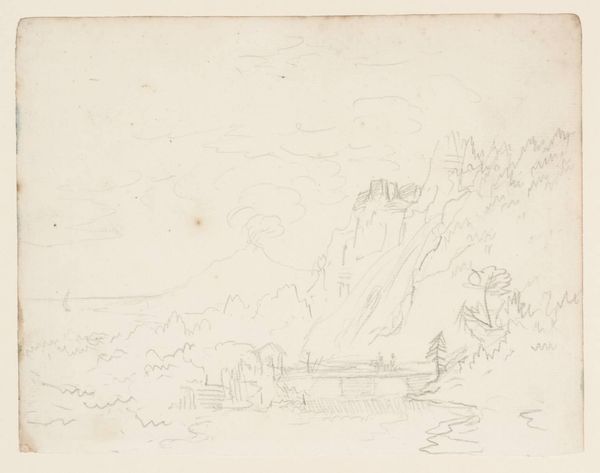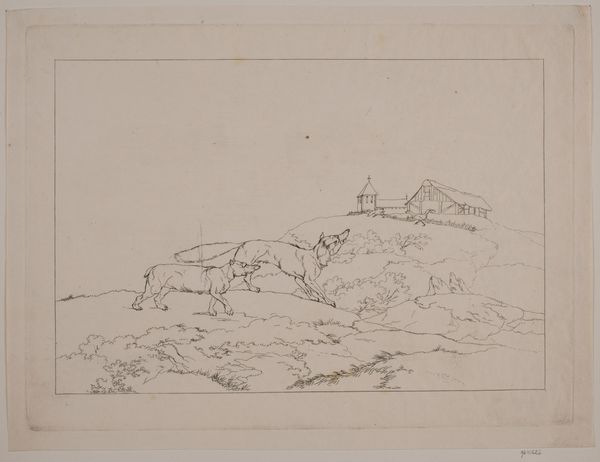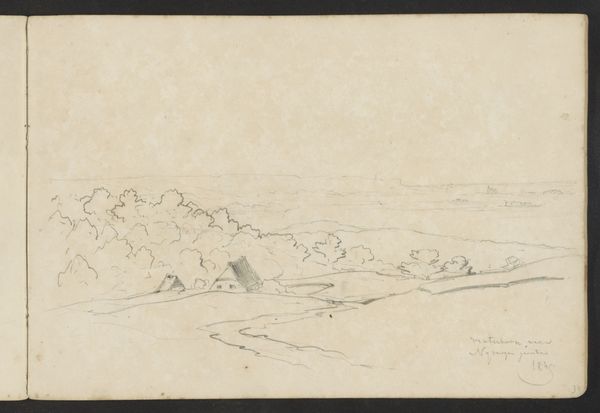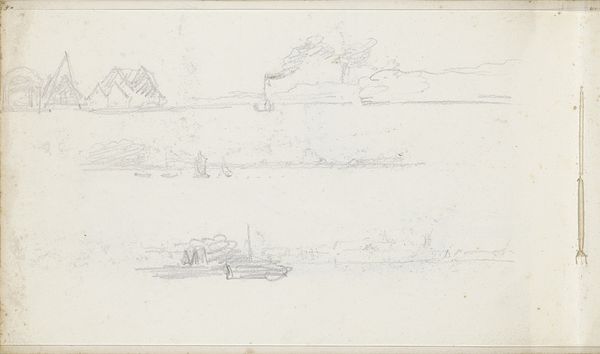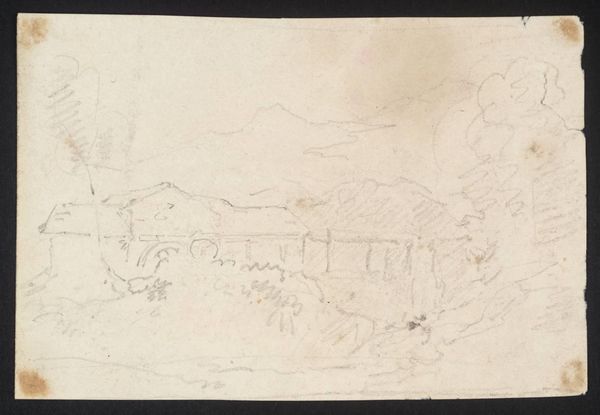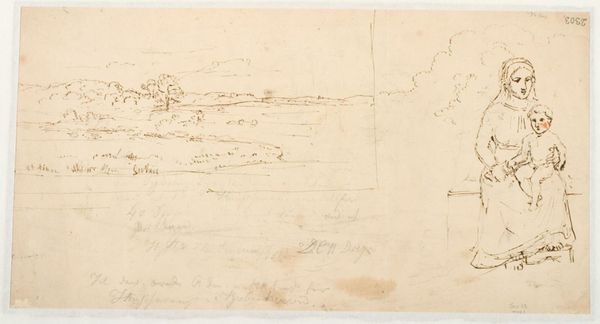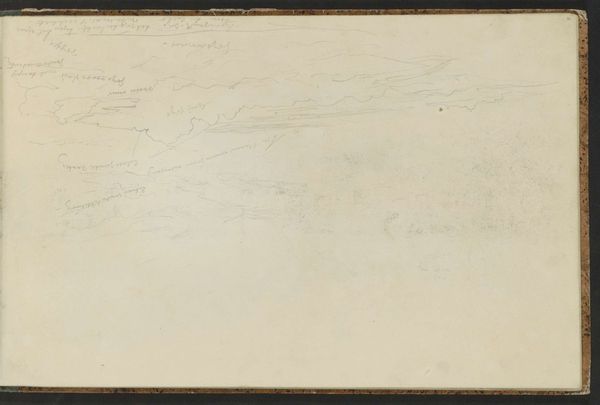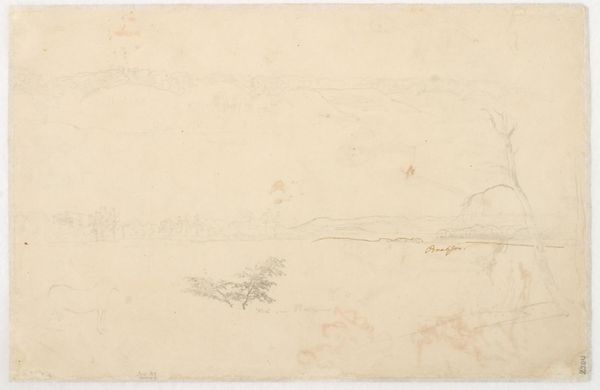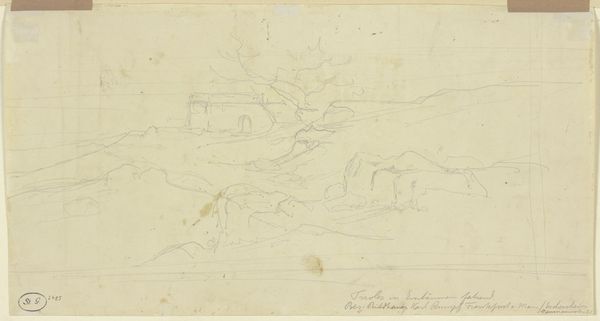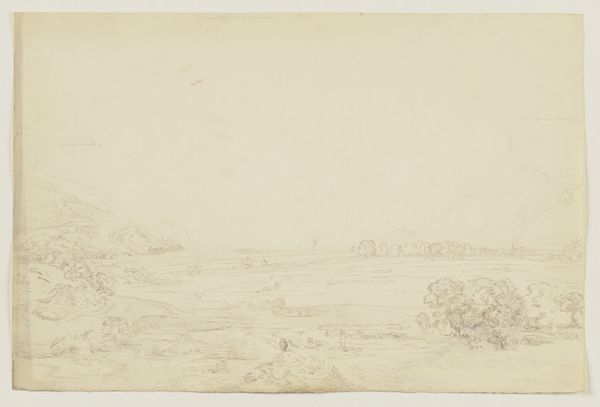
drawing, ink
#
drawing
#
landscape
#
ink
#
academic-art
Dimensions: 208 mm (height) x 324 mm (width) (bladmaal)
Curator: Adam Gottlob Gjelstrup, likely between 1753 and 1830, rendered this subtle drawing titled “Jeppes Hus, Fredensborg” using ink on paper. It's currently housed at the SMK, Statens Museum for Kunst. Editor: What strikes me is its quietness. There's so much empty space above, almost like the scene is holding its breath. I'm strangely at peace observing a rustic house by a pond...it exudes this gentle calmness that soothes you, doesn't it? Curator: I'd argue it reflects the growing importance of landscape art within the academy. Picturesque ideals were becoming intertwined with national identity, and even these seemingly humble dwellings gained symbolic weight, suggesting an idealised rural existence. Editor: Perhaps... although, looking at the skeletal trees in the background, that bend as if brushed by an unseen tempest, lends it a hint of melancholy... Curator: Landscape scenes like these were particularly crucial during the Danish Golden Age, functioning as markers of territorial claims while reflecting changing social perspectives toward nature. There’s a clear appreciation of serenity away from growing urban pressures. Editor: Well, even with all the theory, to me the heart of it resides in those tentative lines Gjelstrup put down; the reflection shimmering just so... He’s whispering to us about the fleeting nature of it all. Life on the edge of stillness, suspended somewhere between daydream and memory. Curator: It certainly draws us into that very specific, perhaps manufactured, Danish Golden Age vision—nostalgic, idyllic, deliberately crafted to underscore a specific era and sense of place within cultural memory. Editor: Yes, true. But ultimately, it speaks volumes even without understanding its history, wouldn’t you agree? Curator: Precisely—the inherent power of such works is their dual existence as cultural documents and prompts for intimate introspection.
Comments
No comments
Be the first to comment and join the conversation on the ultimate creative platform.
